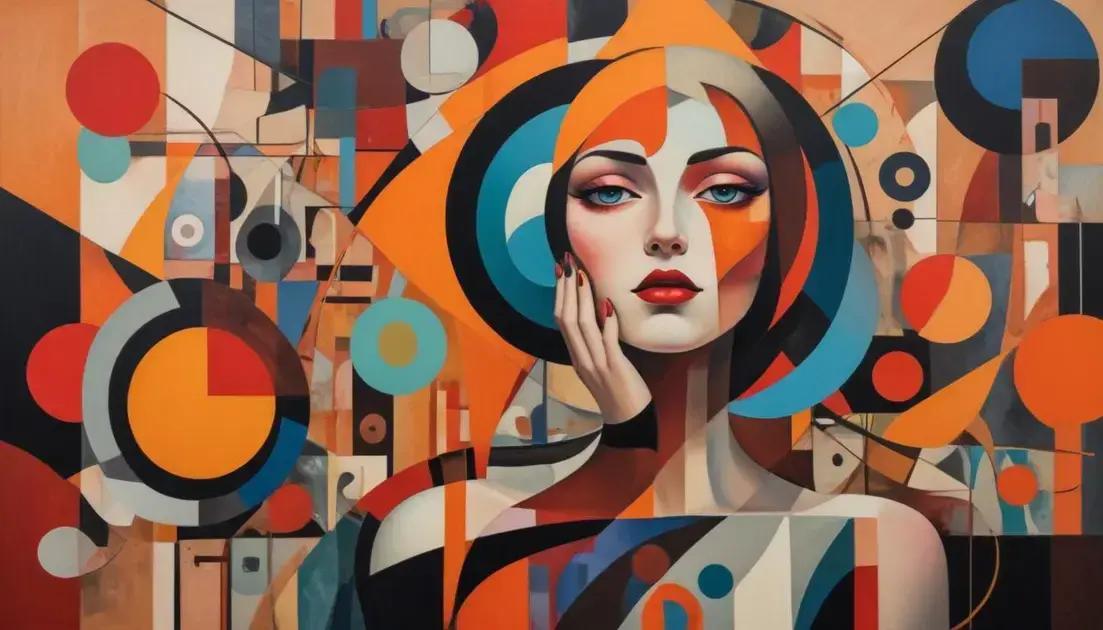
Modernism: Rupture, Avant-Garde and Aesthetic Freedom
Modernism is a transformative movement in art and culture that emphasizes aesthetic freedom, avant-garde exploration, and the influence of rupture. It challenges traditional forms and encourages artists to innovate, breaking boundaries in expression. Iconic figures like Picasso and Virginia Woolf exemplify how Modernism reshaped creative landscapes, leading to unique perspectives in painting, literature, and beyond. The legacy of this movement continues to inspire contemporary art, fostering an ongoing dialogue about creativity and societal change.
Modernism transformed the art world, challenging traditions and infusing creativity with societal relevance. Curious how it shaped today’s culture? Let’s dive in!
Understanding Modernism
Understanding Modernism means diving into a unique period in art and culture. It started in the late 19th and early 20th centuries. Artists wanted to break free from old styles. They sought new ideas and forms of expression. This gave rise to creativity like never before.
The Roots of Modernism
Modernism was influenced by various changes in society. Rapid industrialization and urbanization played a significant role. Artists responded to the world around them, often feeling disconnected from tradition. They wanted to reflect modern life better.
Key Characteristics
One defining feature of Modernism is experimentation. Artists tried new techniques and mediums. This included abstract forms and unusual perspectives. They aimed to capture the essence of their time.
Notable Modernists
Many famous artists belong to the Modernist movement. Think of Pablo Picasso, Virginia Woolf, and James Joyce. Each brought a fresh outlook, adopting new approaches to art and literature.
The Impact on Society
Modernism changed how we view creativity and society. It encouraged questioning traditions and exploring personal perspectives. This movement laid the groundwork for future styles and influences that followed.
The Influence of Rupture
The influence of rupture in Modernism is significant. This concept represents breaking away from traditional forms. Artists sought new ways to express their thoughts and feelings. They believed old methods no longer captured modern life.
Defining Rupture
Rupture means creating a sharp break from what was before. In art, this meant moving away from realistic styles. Artists started exploring abstraction and expressionism. They wanted to show emotions rather than just represent reality.
Examples in Art
Many well-known artists utilized rupture. For example, Pablo Picasso, through cubism, shattered traditional perspectives. His work changed how people viewed art. This style allowed viewers to see multiple angles at once.
Literary Impact
Rupture also influenced literature. Authors like T.S. Eliot broke away from linear storytelling. They experimented with structure and language. This opened new doors for creativity.
Societal Reflections
Rupture mirrored societal changes during the 20th century. With wars and political shifts, artists expressed confusion and chaos. Their work reflected the tensions of modern life.
Exploration of Avant-Garde
The exploration of avant-garde is a crucial part of Modernism. This movement pushed boundaries and challenged the norm. Avant-garde artists sought to innovate and express new ideas. They believed in breaking free from traditional forms.
Defining Avant-Garde
A common goal among avant-garde artists is to experiment. They try different styles and techniques. This approach leads to unique and unexpected outcomes. It’s all about creativity and originality.
Influential Avant-Garde Artists
Many notable artists belong to the avant-garde movement. Names like Marcel Duchamp and Kazimir Malevich come to mind. Their works often sparked conversations about what art could be.
Impact on Art and Culture
The avant-garde significantly shaped art and culture. It encouraged others to think outside the box. This movement invited diverse perspectives and often included social and political themes.
Avant-Garde Today
Even today, the spirit of avant-garde is alive. Modern artists continue to challenge the status quo. They keep pushing the boundaries of what art can represent.
Aesthetic Freedom in Arts
Aesthetic freedom in arts is a vital part of Modernism. This idea means artists can create without restrictions. They are free to express their thoughts and feelings in any way they choose.
What is Aesthetic Freedom?
Aesthetic freedom allows artists to break away from conventional rules. They can explore new styles and ideas. This movement paved the way for countless artistic expressions.
Examples of Aesthetic Freedom
Many artists took advantage of aesthetic freedom. For instance, Wassily Kandinsky used colors and shapes to convey emotion. His work showed that art isn’t always about depicting reality.
Impact on Different Art Forms
Aesthetic freedom affected not just painting but also literature, music, and sculpture. Writers like Virginia Woolf experimented with narrative styles. Musicians began to explore new genres, breaking traditional barriers.
Legacy of Aesthetic Freedom
Today, aesthetic freedom continues to inspire new generations. It encourages artists to push boundaries and try bold new concepts. As a result, the art world is vibrant and ever-evolving.
Conclusion
In conclusion, exploring Modernism reveals a rich tapestry of artistic expression. The influences of rupture, avant-garde, and aesthetic freedom shaped a new world of creativity. Artists broke away from tradition and embraced innovation. They challenged norms and opened doors to endless possibilities in art and culture.
This spirit of Modernism continues to inspire today. Artists are still finding new ways to express themselves and connect with audiences. By understanding these movements, we can appreciate the importance of creativity and the power of art in our lives. Embracing this journey enriches our understanding of the world and ourselves.


